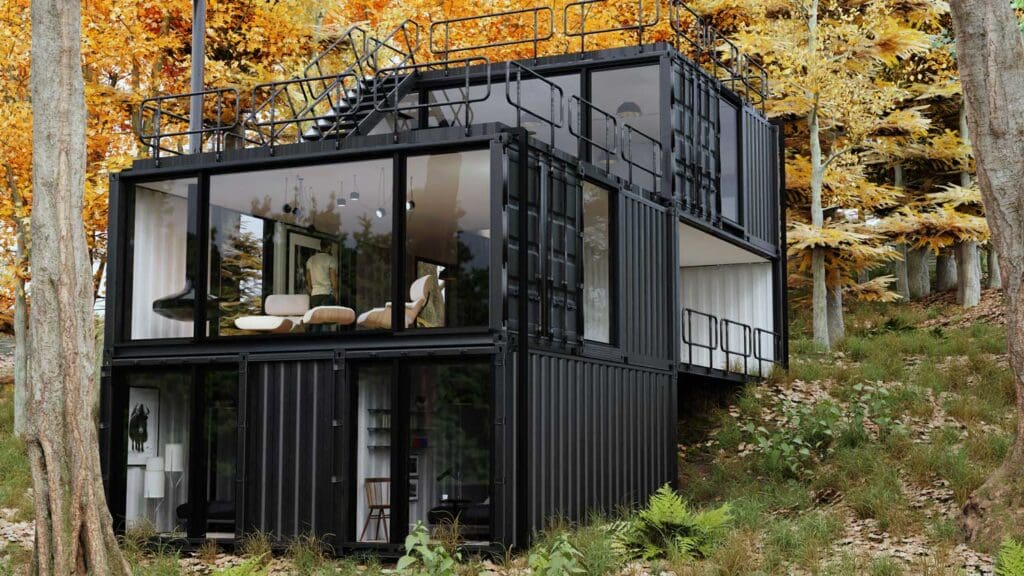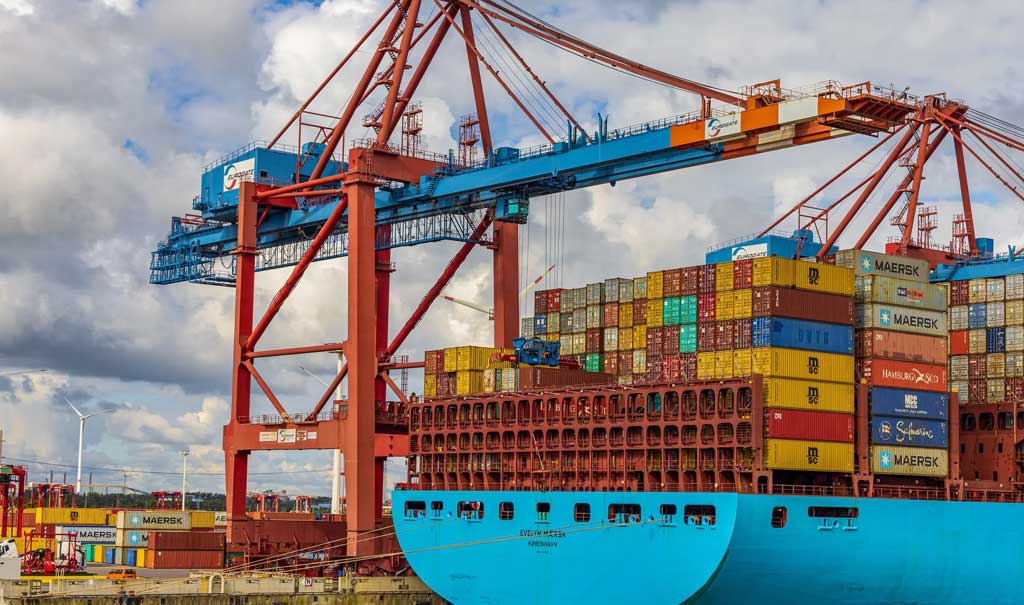Built to withstand the elements and transport large volumes of cargo, shipping containers are strong, hardy, and stackable. But how high you can stack shipping containers depends on a variety of factors. It’s important to understand what these factors are and how they impact the number of containers you can safely stack, as stacking containers too high can be dangerous and increase the risk of accidents.
Use and location of stacked containers
The first consideration when determining how high to stack your shipping containers is where they will be stacked and for what purpose, as standards vary between land and sea and whether they will be used for transportation or construction.
Stacking shipping containers for overseas transport
When moving cargo overseas, shipping containers can be stacked very easily – typically up to nine containers high – when using the following method:
Containers are specially designed to fit securely on top of each other with the corners of the container being reinforced with a twist lock. These can be inserted into the corner castings on the top and bottom of containers and rotated at 90 degrees to lock the units together.
Using the Twist Locks ensures the containers stay in place during their journey overseas. Bridge Fittings may be used for a similar purpose, clamping containers that are next to each other horizontally through the corner castings.
Stacking containers to create multi-container buildings
When stacking a modified shipping container to create a multi-container building like a house, apartment complex, or office building, you must take additional precautions for safety purposes. Additionally, you should always consult city building codes and local experts to stay within your local regulations.

Consider the following when stacking shipping containers on land to maintain structural integrity and maximize safety of the structure:
- Always check the corner posts to make sure they are not damaged.
- Secure the base containers to the foundation for extra strength and security.
- Once you have secured the bottom containers, each container that is placed on top is secured in order. People often use a locking system to connect the shipping containers, like Twist Locks and Bridge Fittings. These connections are placed at the corners of each container as well as any other key spot to help with structural integrity.
How to stack shipping containers
A heavy-duty forklift or crane can be used to safely stack shipping containers.
When using a forklift, always be sure to check that it is rated for the weight limits of the containers and is capable of lifting the container to the necessary height. Forklifts should be operated by experienced technicians.
Cranes, on the other hand, provide extra safety measures and can suspend the container in the air until it is placed perfectly.
Other factors to consider when stacking shipping containers
- Weight and distribution of cargo – The weight of the container should be considered as well when stacking shipping containers. Much heavier containers should not be placed on top of lighter containers. While the container itself will weigh the same when empty, some products that are shipped will be much heavier. The heavier containers should be closer to the bottom of the stack rather than the top.
- Condition of containers – For safety purposes, it is important to avoid low quality containers when stacking units together. Ideally, Cargo Worthy inspected containers are the best condition to use as they have been inspected to be structurally sound enough to be stacked with cargo and shipped overseas. It’s crucial that you buy from a reputable seller that has a solid track record and ensures you get the type of container you need for your project.
- Container Size – The size of the unit will dictate where it will go on the ship. Smaller containers go on the bottom because they need the security of larger containers holding them down. Larger containers go on the top to make sure the smaller containers don’t move too much and improve overall structure. If they are placed above they won’t have the same stability because the corner posts are not aligned.
If you are looking for shipping containers with delivery or local pickup, check out our shipping container sales locations across the U.S. Want to learn more about Container Sales Group? Call 888-320-5938 or contact our team for a quote.


